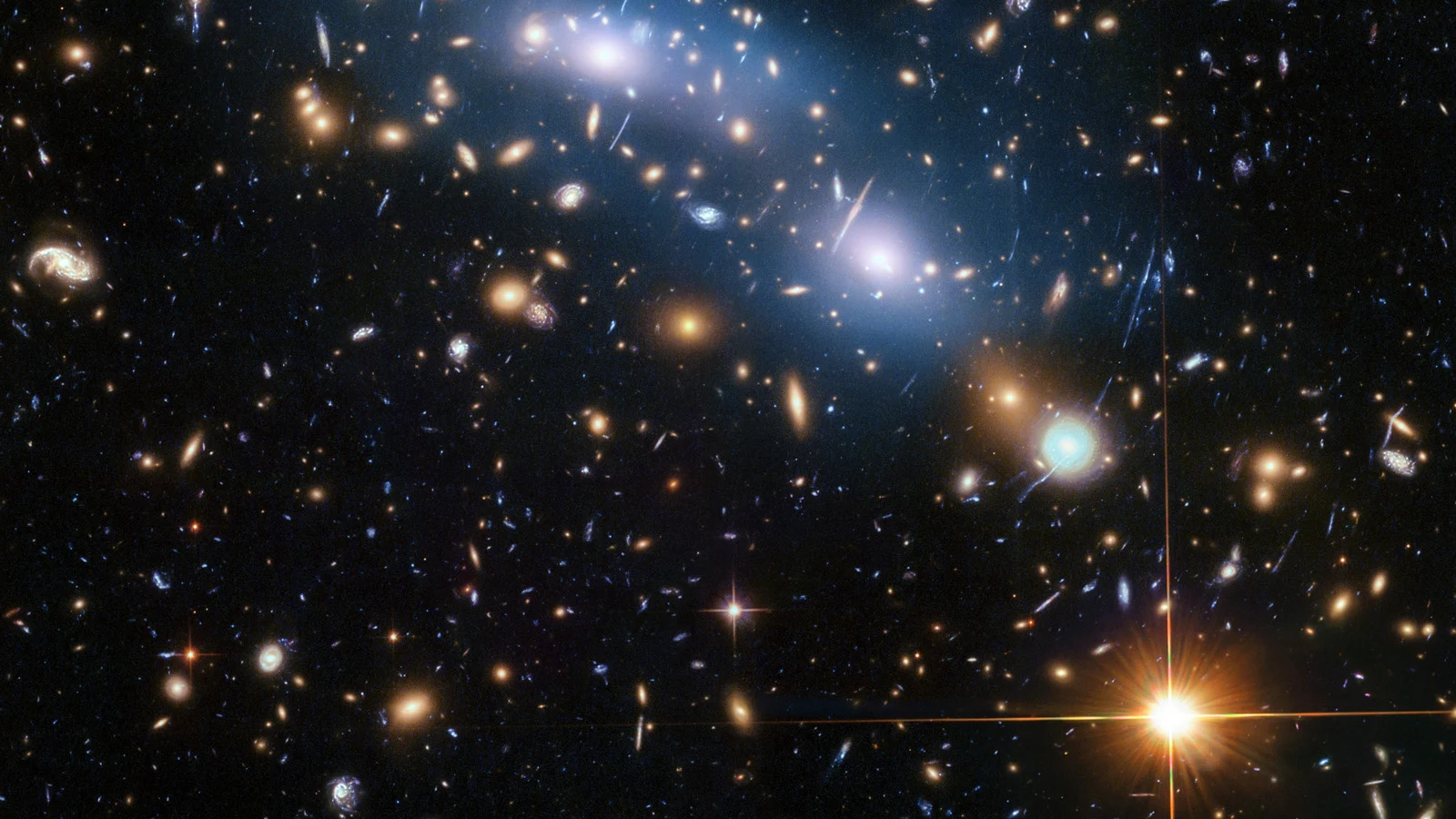
Hubble pushed beyond its limits to reveal hidden surprises from early Universe
The universe's first stars continue to elude, but astronomers reveal other unexpected finds
A search for the universe's very first stars has pushed the Hubble Space Telescope beyond its limits, revealing never-before-seen sights and leading astronomers to the realization that the first stars and galaxies formed even earlier than they thought.
When astronomers began cataloguing the stars in the universe, they divided them into two different 'populations'. Population I stars, such as our Sun, are those found in the disk and spiral arms of a galaxy like the Milky Way. They may vary in size, brightness, temperature and age, but these stars all have one thing in common. In addition to hydrogen and helium, they also contain a small amount of heavier elements - carbon, nitrogen, oxygen, iron - which astrophysicists call 'metals'. Population II stars, which are found in the galactic bulge, the halo that surrounds our galaxy and in globular clusters that orbit the galaxy, have far less of these 'metals', indicating that they are older than Population I stars.
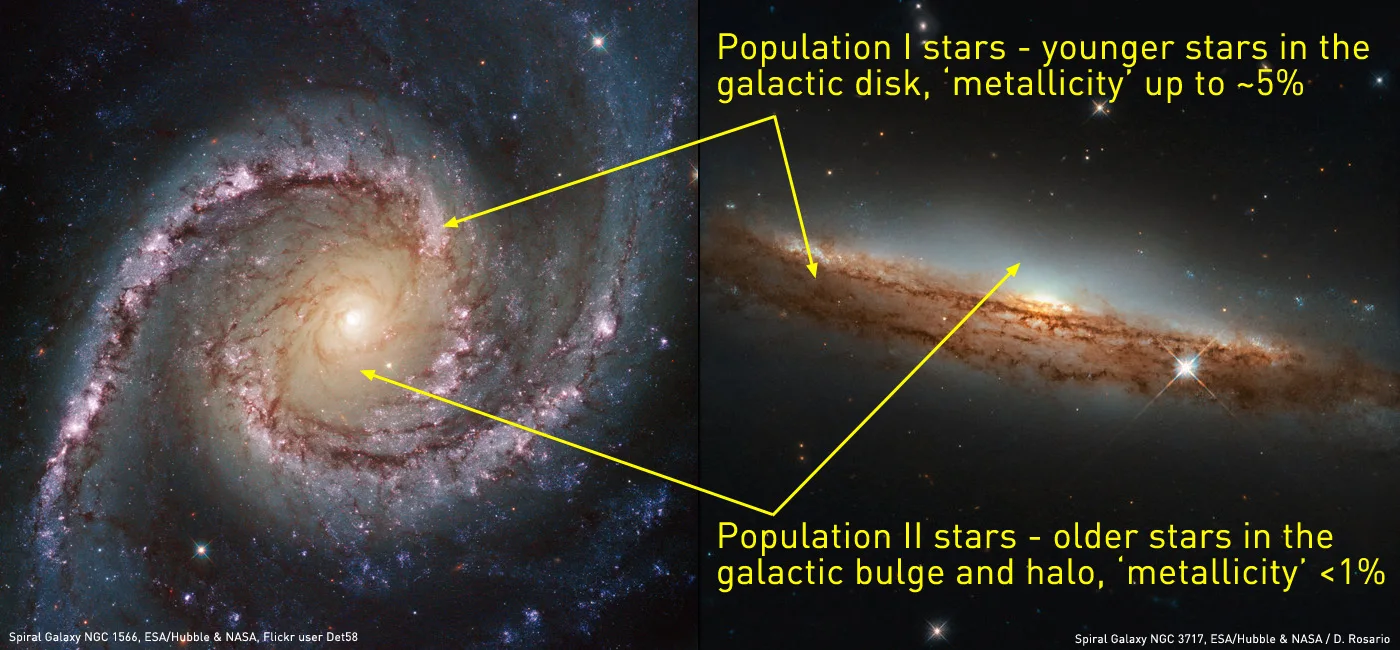
Population I and II stars occupy different parts of the spiral galaxies and have different properties. Left: Spiral Galaxy NGC-1566, credit: ESA/Hubble & NASA, Flickr user Det58. Right: Spiral Galaxy NGC 3717, credit: ESA/Hubble & NASA, D. Rosario. Composition: Scott Sutherland
Then there are Population III stars.
When astrophysicists put chalk to blackboard to explore how the universe evolved since the Big Bang, they determined that the very first elements to form were hydrogen and helium. Potentially, a tiny amount of lithium and beryllium - the two next-heaviest elements, after hydrogen and helium, on the Periodic Table - may have also formed, but they would have been extremely rare.
So, the very first stars to shine their light into the universe - dubbed 'Population III' since they were categorized after the other two - would have been quite different from the ones we see now. First, they would have been truly immense, up to 300 times the mass of the Sun. Such a star would appear about 30 times larger in our sky. Second, they would have been millions of times brighter than the Sun. Third, they would have also been virtually metal-free. It would be the explosive deaths of these massive stars that would seed many of the heavier elements into the universe.
The thing is, Population III stars are still only hypothetical. Their existence makes sense, in theory, but they formed so early in the universe and would have died so quickly that we just can't see them with our current telescopes. Astronomers have been pushing the most powerful telescopes we have to their limits and beyond. However, they still haven't seen even one Population III star.
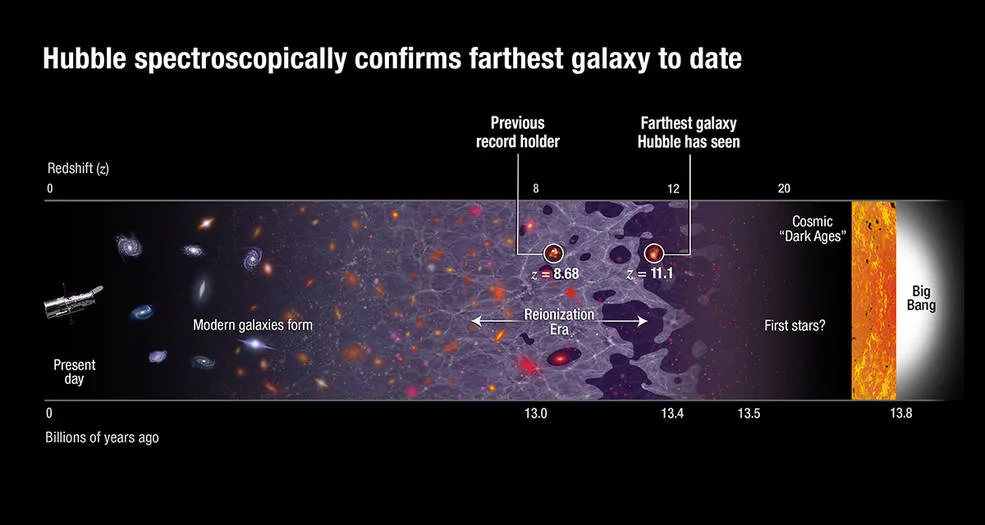
The farthest and earliest object Hubble has ever seen is GN-z11, a large, exceptionally bright galaxy seen 13.4 billion years in the past, just 400 million years after the Big Bang. Credit: NASA, ESA, P. Oesch and B. Robertson (University of California, Santa Cruz), and A. Feild (STScI)
Now, a new search for Population III stars was conducted using the Hubble Space Telescope, by Rachana Bhatawdekar of the European Space Agency, and a team of three colleagues from the UK, France and The Netherlands.
Although the Hubble Space Telescope remains one of the most powerful telescopes available to astronomers, even it has its limits. On its own, it cannot see far enough out into space (and thus far enough back in time) to spot Population III stars.
To push Hubble's powers beyond their limits, Bhatawdekar and her team aimed the telescope at a region of space known as Galaxy Cluster MACSJ0416. This grouping of galaxies is so massive that its collective gravity actually bends spacetime around it into a lens.
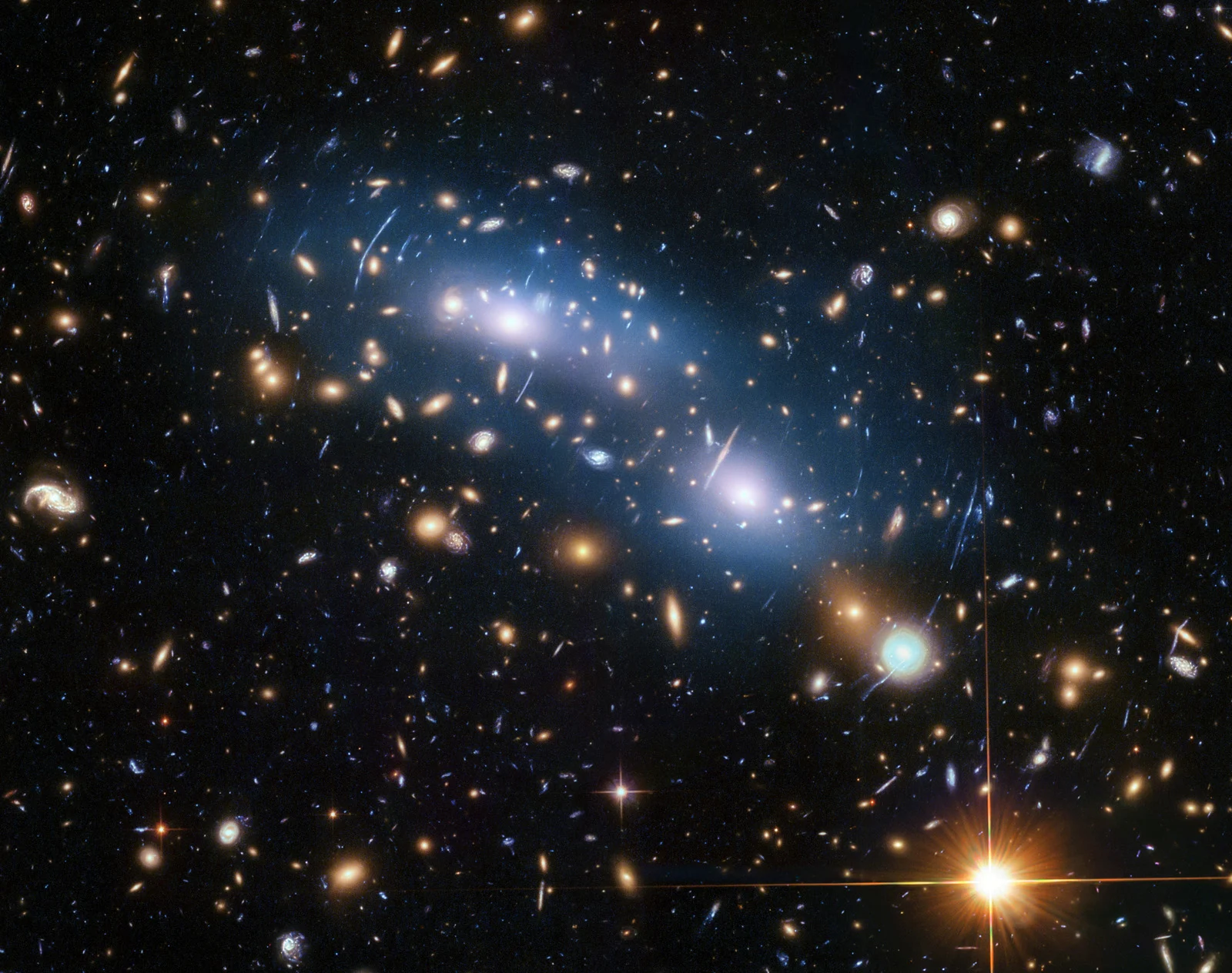
The collective mass of galaxy cluster MACS J0416 warps the spacetime around it, producing a powerful gravitational lens that Hubble can use to peer even farther into the universe that it can on its own. A foreground star, in our own galaxy, shines in the bottom right of the image. Credit: NASA, ESA, and M. Montes (University of New South Wales, Sydney, Australia)
Pointing Hubble here allowed the team to magnify and collect light from objects on the other side of that cluster, which were much too dim and distant to see otherwise.
To ensure that they could see objects beyond the cluster, the team used a new technique they called 'Divide and Conquer'. Gathering imagery of the cluster, they modelled the locations of the galaxies in the foreground and then removed them from the field of view. This left only the surrounding and background objects.
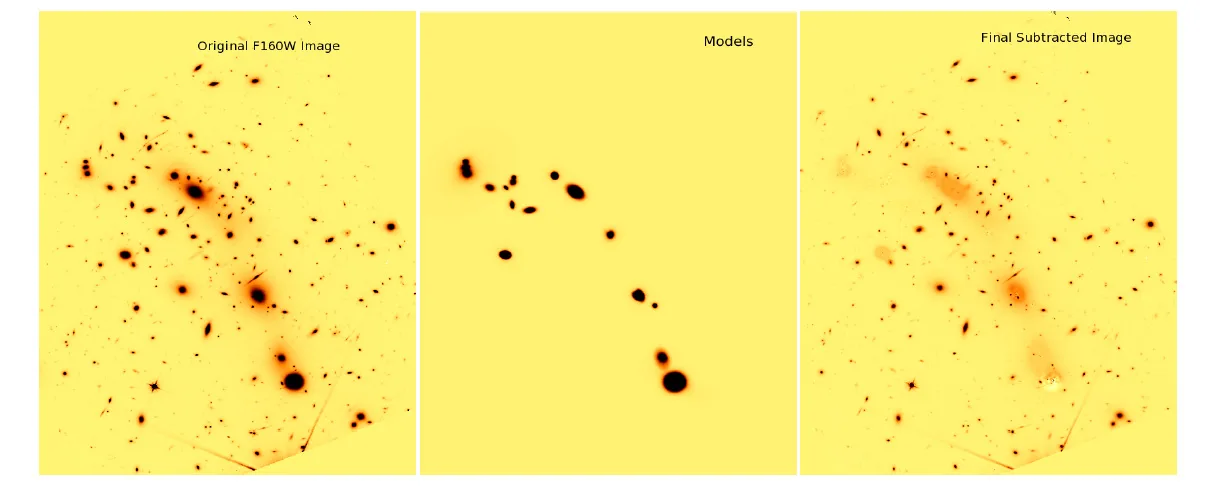
Left to right: The original capture from Hubble of MACSJ0416, the model of the cluster Bhatawdekar and her team used in their 'Divide and Conquer' procedure, and the final subtracted image. Faint galaxies that were obscured by bright foreground objects became clearly visible after the subtraction procedure. Credit: Bhatawdekar, et al.
Their technique yielded some amazing results, as they spotted the lowest-mass galaxies ever seen with Hubble. There was a down-side, though. Even peering back in time that far, to when the universe was less than 1 billion years old, they still did not find any evidence of the first stars!
"We found no evidence of these first-generation Population III stars in this cosmic time interval," Bhatawdekar said in a Hubble press release.
These things happen in astronomy. The scientists don't always find what they were looking for, and while that's unfortunate, what they do find often leads to other discoveries. This is no exception.
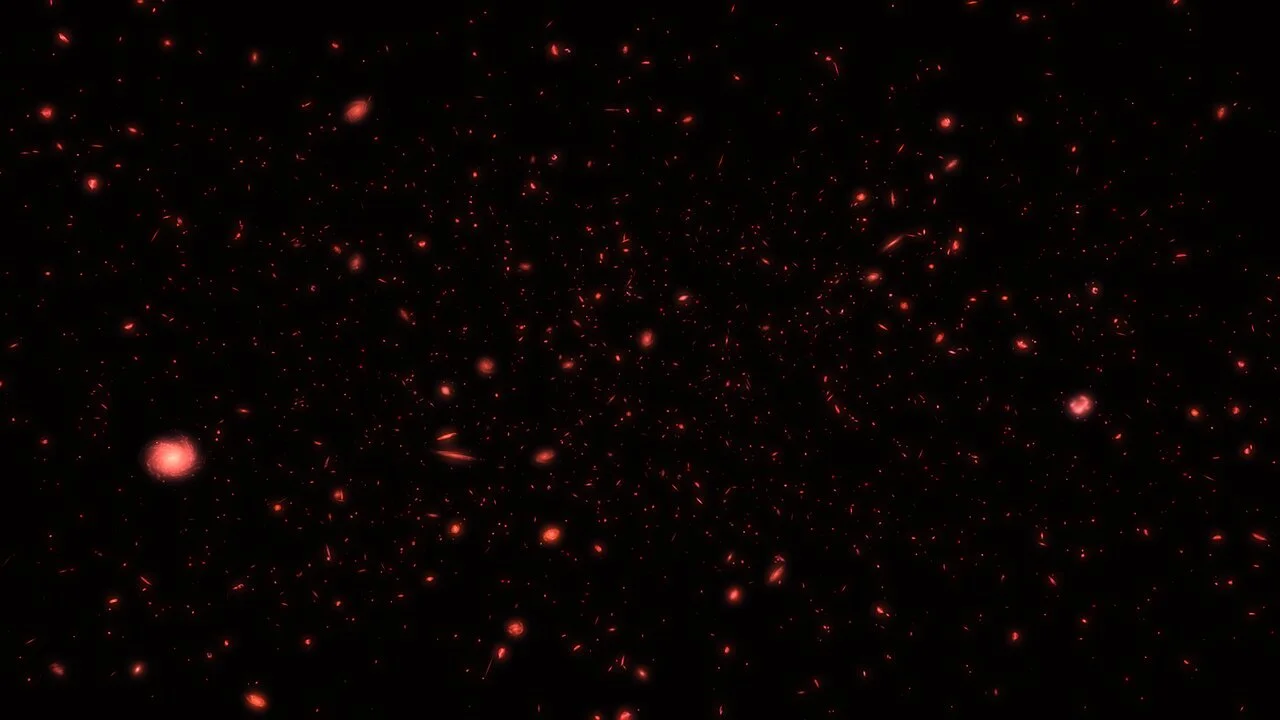
This artist's impression shows a view of the early universe. Credit: ESA/Hubble, M. Kornmesser
Even though Population III stars eluded them, Bhatawdekar and her team provided a new technique to find dim, distant objects in space. They also narrowed down the span of time when the first stars and galaxies would have formed.
"These results have profound astrophysical consequences as they show that galaxies must have formed much earlier than we thought," Bhatawdekar explained.
As an added bonus, they may have also provided an answer to another question scientists have been asking about the early universe.
When the first protons, neutrons and electrons formed, the majority of the matter in the universe was ionized. Then, when the first atoms of hydrogen, helium, lithium and beryllium condensed, this supposedly reduced everything to neutral atoms. Sometime within the period of the early universe, from 500 million to 1 billion years after the Big Bang, the universe became re-ionized, due to the ultraviolet radiation from stars stripping electrons away from their atoms. Astronomers and astrophysicists call this the 'epoch of reionization'.
It was thought that if Population III stars existed at this time in the early universe, they would be the likely cause of this reionization. With these results, it would seem that these low-mass galaxies are responsible.
The unfortunate part of this is that Population III stars, and the galaxies they gathered into, may have formed too early for Hubble to ever see them. Even with the assistance of giant gravitational lenses, the telescope simply cannot look that far back in time.
Instead, the search for the universe's first stars will likely fall to the James Webb Space Telescope, which is scheduled to be launched into space in early 2021.
Sources: Hubble | NASA JPL | NASA JWST






